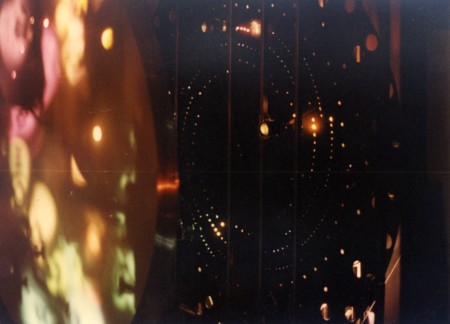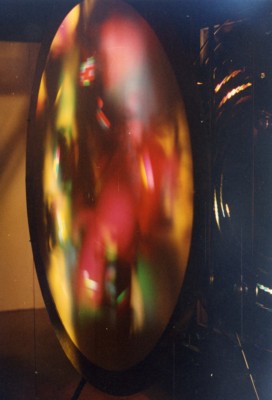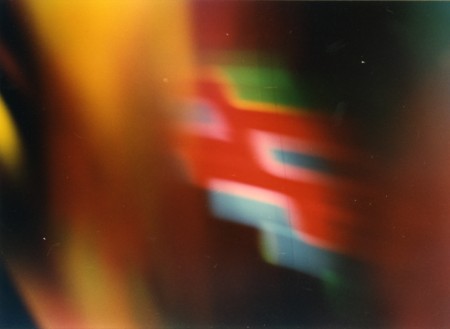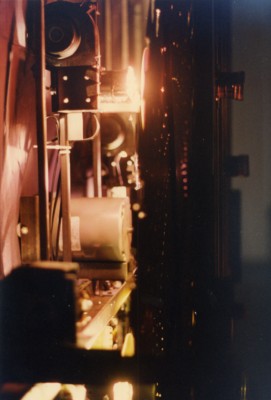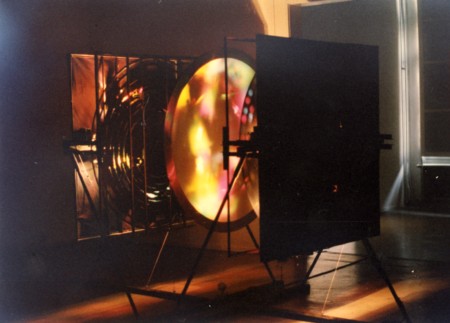
A text I wrote in 1996:
”
#13 is an installation in which nipkow-discs are used to generate images through interference with small colour wheels. Up till now I have been using giant nipkow-discs of appr. 1.5 meters diameter, which generate noise and wind when spinning at about 10 revolutions per second. In this way I wanted to show the inherent violence of these fast scanning processes. On and off I am now working on much smaller optical boxes based on the same principle. In these I want to concentrate more on the imagery.
#13 is directly inspired by the early beginnings of television. The principles of television and the principles of cinema were in fact discovered around the same time. The first designs for systems to transmit images by radio or cable date already from 1875. However, with the technology of that time it was impossible to increase the speed so that also moving images could be seen at a distance. This became reality in the forties with the development of the electronic image tube for camera as well as receiver.
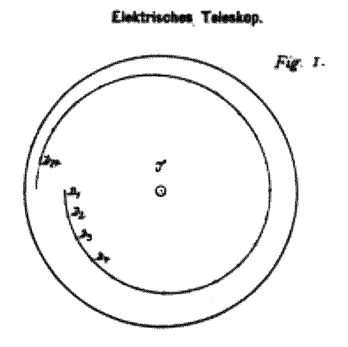
What interests me most are the experimental television set-ups until the thirties. These did not contain image tubes yet, but used mechanical systems to scan the images. Of these the most interesting and the most widely used was the nipkowdisc, invented by Paul Nipkow in 1874. A nipkowdisc is a disc that rotates more than 15 times a second before a lightsource or lightsensitive element. Because of the spiral pattern of holes in the disc every image-line is `exposed` sequentially. This makes one channel sufficient to send twodimensional images. The nipkowdisc translates an image into a temporal fluctuation and can be considered to be the ideological forefather of the fax, of television and of the computer monitor.
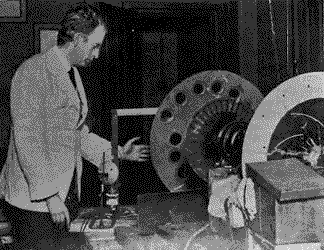
The technical development from film to television to digital media can be reduced to a surprisingly linear development from two-dimensional to one-dimensional to zero-dimensional. Film is a sequence of two-dimensional pictures, television-images are one-dimensional fluctuations of a signal and computer-images are collections of zero-dimensional bits. It is striking that with every phase the possibillities of manipulation (control, distribution, storage) increase, but that at the same time the sensual crispness has to be reconquered using ever more complicated and indirect techniques.
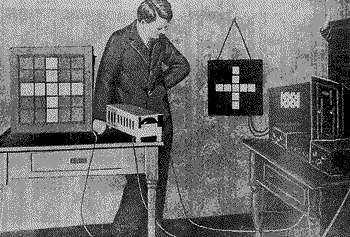
Versions of #13 have been presented at the International Symposium of Shadows in London in October 1996, and at the exhibition ´Lumen ex Machina ´ in Arti et Amicitiae in Amsterdam in january 1997.
”
